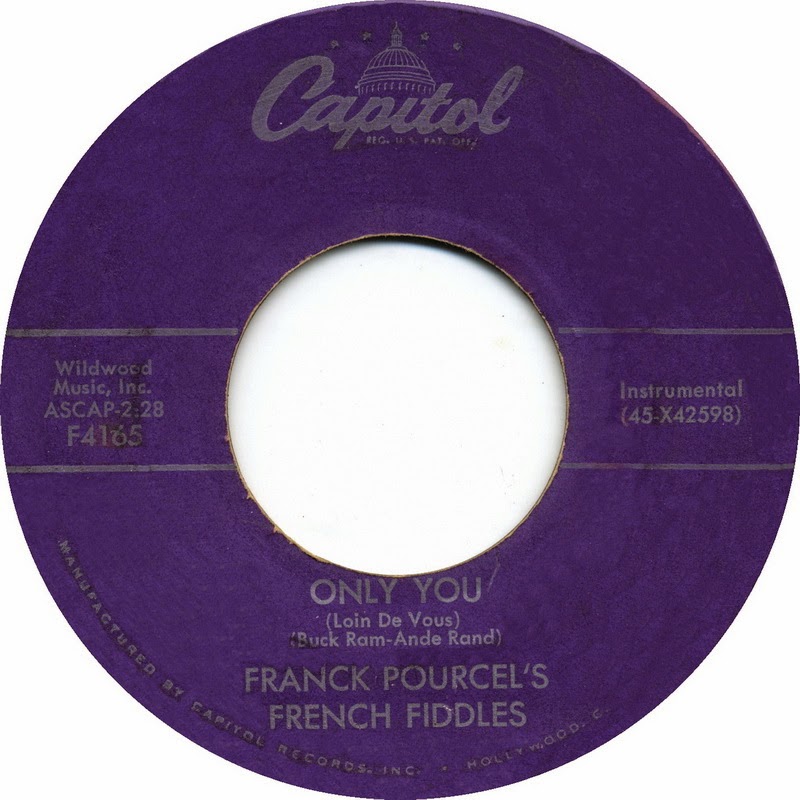On November 18, the Complete 60s label will release Rock & Roll Symphony No. 1: A 1959 Stereo Concert, the first (and likely to be the only) anthology to document the brief fad for setting orchestral instrumentals to rock rhythms.
The rock rhythm we're talking about here, to be specific, is the rock and roll triplet, which originated in R&B but then became a ubiquitous feature of pop and rock recordings. Bandleaders had two goals in pairing orchestral instrumentals with rock rhythms: The first was to sell orchestral music to teenagers, and the second, more activist goal was to uplift the youth by providing them with "better," more sophisticated music than the brainless rock and roll that kids otherwise listened to (in the bandleaders' view—not mine). Enoch Light, in the liner notes he wrote for his album With My Eyes Wide Open I'm Dreaming, makes this point very explicitly:
“Rock and roll must be applied to better melodies than it usually is.” And 101 Strings’ David L. Miller, in the liner notes of Back Beat Symphony, said, "Too often, teenagers “must be
satisfied with badly written songs with borderline obscene lyrics.”
 The anthology also contains the stereo debut of Frank Pourcel's French Fiddles' five-million-selling orchestral arrangement of the Platters' "Only You (And You Alone)," which was so successful that it even reached the R&B Top 20 in 1959. Despite the title, the anthology isn't confined to recordings from 1959. A few other later recordings in the same vein are also included: Percy Faith's "'The Theme from 'A Summer Place'"—the biggest hit of 1960—and Raymond Lefèvre's hard-to-find hit "Soul Coaxing (Ame Caline)" from 1968.
The anthology also contains the stereo debut of Frank Pourcel's French Fiddles' five-million-selling orchestral arrangement of the Platters' "Only You (And You Alone)," which was so successful that it even reached the R&B Top 20 in 1959. Despite the title, the anthology isn't confined to recordings from 1959. A few other later recordings in the same vein are also included: Percy Faith's "'The Theme from 'A Summer Place'"—the biggest hit of 1960—and Raymond Lefèvre's hard-to-find hit "Soul Coaxing (Ame Caline)" from 1968.All of the recordings were carefully remastered in wide stereo by a team of engineers and stereophiles. Here are some particulars on some of the other contributors to the brief fad for orchestral rock, some of which are featured on Rock & Roll Symphony No. 1: A 1959 Stereo Concert.
Enoch Light and the Light Brigade
Light's album With My Eyes Wide Open I'm Dreaming contained the 1959 hit of the same name and other orchestral rock tracks in a similar vein. It was Light's only orchestral rock album; he otherwise recorded ultra-high-fidelity stereo showcase albums like the Persuasive Percussion series.
The Knightsbridge Strings
The Knightsbridge Strings
were a studio ensemble of London musicians. Their arrangements were penned by
Reg Owen, who had a big hit under his own name with “Manhattan Spiritual,” and
Malcolm Lockyer. The Knightsbridge Strings had orchestral rock hits with instrumental renditions of "Wheel of Fortune" and "Cry," both of which were included on their album The Strings Swing.
Ray Martin – The Rockin' Strings of Ray Martin
Features orchestral arrangements of pop standards, like "Who's Sorry Now?" and "Blueberry Hill," with rock rhythms.
Raymond Scott – Raymond Scott Presents the Rock 'n Roll Symphony
This anomalous 1958 album by Raymond Scott is similar to Ray Martin's: It contains orchestral rock renditions of oldies like "Stardust" and "How High the Moon." A poorly mastered reissue is available on Amazon.
The Back-Beat Philharmonic
The Back-Beat Philharmonic, which released only one single, was actually the Islanders—the duo of Frank Metis and Randy Starr—who wrote and produced the 1959 hit "The Enchanted Sea." In 1961, Metis and Starr recorded this rock version of Beethoven's Fifth Symphony as "Rock and Roll Symphony" under the name Back-Beat Philharmonic. The recording, poorly mastered from vinyl, is included on the anthology Axes, Saxes, Skins & Ivories: 25 Instrumental Rareities [sic] Volume 2.





No comments:
Post a Comment